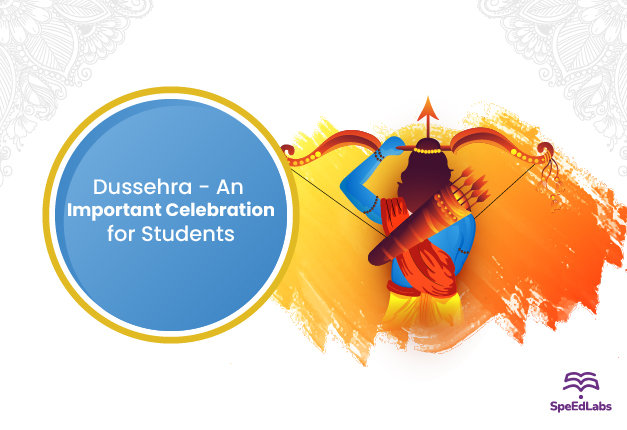Dussehra (Vijayadashami, Durgotsav) is a festival that marks the end of nine days of festivities known as Navratri (nine nights), with Dussehra being the tenth. In general, Dussehra is a celebration of the triumph of good over evil, but it is also the start of the harvest season in India, so people invoke the Mother Goddess to watch over the new harvest season and rejuvenate the fertility of the soil.
This festival is observed in all regions of India, but different communities observe it in different ways. Because the dates of this festival are determined by the lunar calendar, it falls on a different date of the Gregorian calendar each year.
What is the Significance of Dussehra?
The conflict between good and evil, specifically the struggle between asuras (daemons) and devas, is a major theme in ancient Hindu mythology (gods). The Navratri tale tells of an asura named Mahishasura who invaded heaven, vanquished Indra and drove the gods out. The gods decided to pool all of their abilities to forge a strong entity capable of eradicating Mahishasura. They named the strong being they produced Durga, and they gave her their super-weapons. The nine-day battle between Mahishasura and Durga during Navratri is said to have taken place. On the tenth day, the goddess is said to have finally vanquished the demon.
Besides this, it is believed that on this day Ram, Hanuman, and an army of vanaras (humanoids that resemble monkeys) vanquished the demon Ravana. They engaged in this conflict to free Sita, the wife of Ram, who had been abducted and imprisoned by the evil rakshasa in his palace on the island fortress of Lanka.
What does the Dussehra Celebration look like?
DURGA PUJA
The main way that this festival is observed is through a prayer service called a Durga puja, which is offered to the goddess Durga. The largest Durga Puja celebrations take place in Bengal, where worshipers erect elaborate pandals and place a goddess effigy inside of them. People make offerings in the form of prayers and flowers for the six days leading up to Dussehra. To represent Durga’s return to her husband Shiva, who resides in the Himalayas, these idols are submerged in a water body on the seventh day.
THE DANDIYA RAAS
Another way that people celebrate Dussehra is with Dandiya Raas. Men and women perform the traditional dance known as dandiya while striking short sticks together in unison to the beat of a dhol. The dance form known as “the sword dance” is a parody of the conflict between Mahishasura and Durga. Despite having its roots in Gujarat, it has gained popularity across all of India.
RAMLILA
The Ramlila, a reenactment of the Ramayana, is a common way to celebrate Dussehra in most of northern India and some areas of Maharashtra. Since the Ramayana is an epic, only the most important events in Ram’s life are highlighted. The battle scene between Ram and Ravana and the final victory over evil all take place on Vijayadashami. Tall effigies of Ravana, his son, and his brother are burned with great fanfare on the last and final day of Dussehra.
What Should We Learn From This Festival?
- Truth Prevails
You will always flourish if you are on the side of truth. At most, justice may be delayed, but you will always receive it. So practice dharma and be patient like Lord Rama. Do not deceive anyone. Do not assert anything that is morally not yours. Do not be greedy, don’t take bribes, and don’t encourage corruption.
- Avoid Being Egocentric
Ravana developed an excessive amount of ego regarding his abilities. He believed that nobody could beat him.
His fall was brought on by his ego. Otherwise, Ravana was among the most knowledgeable and wise people of his time. He is regarded as one of Lord Shiva’s greatest devotees. All four of the Vedas and shastras were under his control. He was a master of astrology and Ayurveda as well as a great veena player. Despite this, he neglected to do one thing, which is to deal with his ego before attempting to deal with the rest of the world. He conquered each of the nine astrological planets. He overcame the devas, who were among the most powerful people at the time (gods). However, he failed to subdue his ego. He would not have been misled by his ego if he had attained inner mastery.
Dussehra is a reminder!
Today’s humanity is following Ravana’s example. We are on a mission to conquer the entire planet and have sent missions to Mars and beyond. However, we do not control our inner world. Despite all these technological advancements, people continue to live miserable, depressing lives. We are asserting our ownership of the entire planet. We overlook the fact that animals and birds share the same rights to the planet. We are depleting the earth’s natural resources due to our greed.
Also published on Medium.
